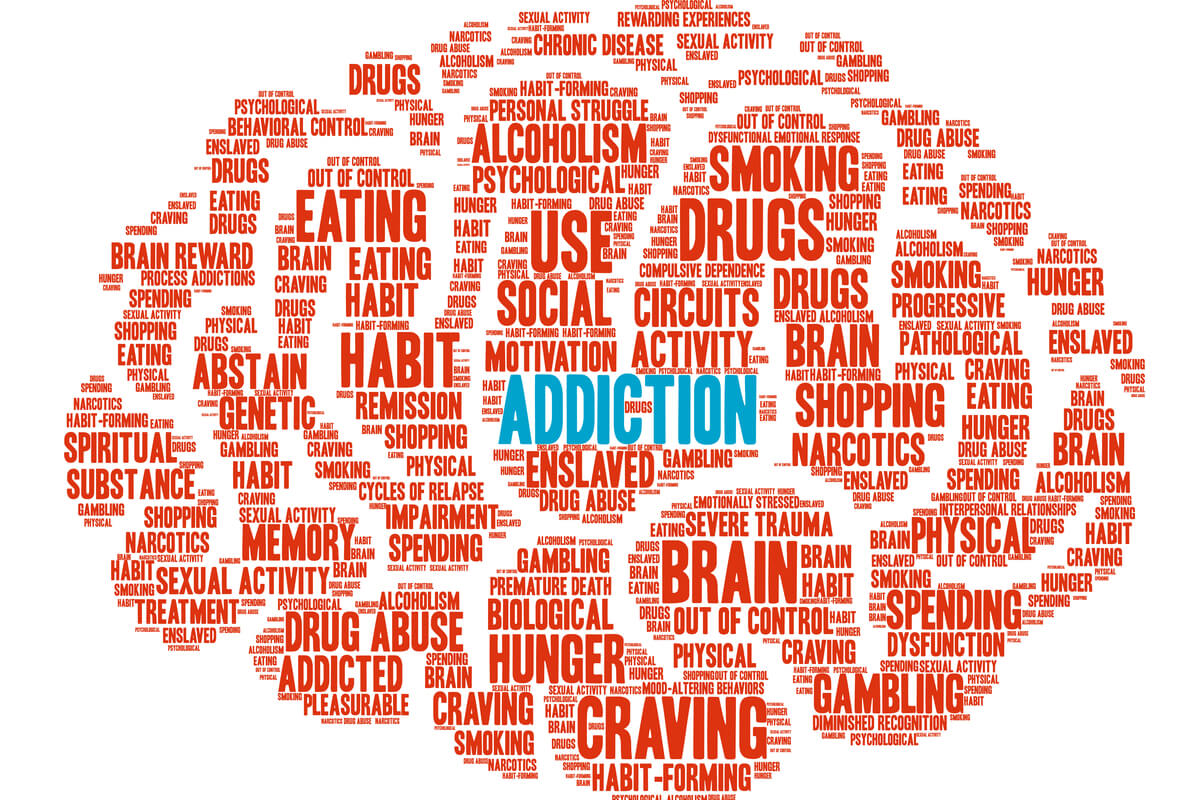
Alcohol withdrawal is notoriously difficult. Despite the substance being legal, it can cause very high levels of dependence.[1] Understanding what the detox process is like, including the stages of withdrawal you can expect to go through, can help you understand what is happening in the early days of your recovery.
Alcohol withdrawal can sometimes be dangerous. It’s important to seek professional help during the detox process to maximize your chance of a successful recovery and reduce the chance of experiencing lasting harm. Don’t attempt to simply stop drinking suddenly on your own without medical guidance.
The Main Stages of Alcohol Detox
Below are the stages of acute withdrawal a person will generally go through when quitting alcohol use after becoming physically dependent.[2] A person’s exact experiences may differ, with symptom severity often impacted by how long and how much a person was drinking before they quit.
After acute withdrawal has been completed, a period of significantly less severe withdrawal called protracted withdrawal will then begin.[3] During this time, a person may feel generally unwell for several months and still experience strong alcohol cravings.
Here’s what to expect:[2]
| Time Frame | Common Symptoms | |
| Stage 1 | 6-12 hours | Tremors, heavy sweating, anxiety, diarrhea, nausea, vomiting and alcohol cravings |
| Stage 2 | 24-48 hours | Temperature fluctuations, high blood pressure, rapid heart rate, confusion, abnormal breathing and powerful cravings |
| Stage 3 | 48-72 hours | In severe cases, visual or auditory hallucinations, seizures, severe disorientation and significantly impaired attention |
Stage 1: Initial Withdrawal (6-12 hours)
After six or more hours of stopping alcohol use when dependent on it, a person will begin to experience the initial stage of acute alcohol withdrawal.[2] They will start to experience the common symptoms associated with alcohol withdrawal like tremors, anxiety, sweating and nausea. Dehydration may start to become a concern, as a person will begin to sweat excessively and may have diarrhea.
They will likely begin to strongly crave alcohol, potentially feeling like they need to drink.
Stage 2: Secondary Withdrawal (12-48 hours)
As time progresses, withdrawal symptoms can escalate. A person may see an increase in their blood pressure and/or heart rate.[2] They may shiver or feel overheated, with their body temperature fluctuating.
It is at this point some people may become confused, finding it hard to focus and think logically. They may breathe abnormally, often breathing more rapidly than normal.[2]
Many people will begin to view detox as very physically and emotionally challenging at this point. They may feel very nauseous and just generally extremely uncomfortable. Performing many basic tasks in this state will generally be almost impossible.
Stage 3: Final Acute Withdrawal Stage (48-72 hours)
In the final stages of acute withdrawal, some individuals may start to experience severe symptoms, such as visual or auditory hallucinations, seizures, disorientation and impaired attention.[2] If not tended to by a professional, these severe symptoms can endanger a person or potentially even cause them to harm those around them.
However difficult, these symptoms should begin to fade. The worst of a person’s alcohol withdrawal will then be behind them as long as they maintain drug abstinence.
Delirium Tremens
The most severe form of alcohol withdrawal is delirium tremens (DTs).[4] It affects almost 2% of people who are dependent on alcohol, and the condition can be fatal. This is why it is never advised to stop drinking alcohol without medical supervision.
In a medical detox program, medical professionals will monitor patients for symptoms of DTs, potentially prescribing benzodiazepines to manage withdrawal. This ensures patients stay safe and as comfortable as possible as they detox from alcohol.
While DTs can potentially resolve within the 72-hour period described above, they can last as long as 10 days.[5]
At-Home Detox
Many people understandably want to detox on their own in the comfort of their own homes. However, it needs to be highlighted again that this is risky when quitting alcohol.
Alcohol withdrawal has the potential to be quite severe and can be life-threatening.[2] A person can become disoriented, experience seizures or may temporarily become divorced from reality, making decisions they normally wouldn’t make. Even if one doesn’t experience life-threatening symptoms, trying to quit on your own significantly increases the chance of an early relapse.
This is why the recommendation is to get professional help when quitting alcohol. By quitting in a controlled environment with medical supervision and the help of Medication for Addiction Treatment (MAT), you can remain safe. In addition, your access to alcohol is significantly hampered, reducing the chance of a relapse when your withdrawal symptoms are at their worst.
What Factors Impact Alcohol Detox Symptoms?
Several factors may impact an individual’s experience with alcohol withdrawal, including these:[2,6]
- The amount of alcohol they regularly drink
- The length of time a person has been misusing alcohol
- Weight
- Certain health problems, especially those related to the liver and heart
- Medications that may have overlapping symptoms with withdrawal symptoms, worsening them
- Medications designed to help suppress certain withdrawal symptoms, such as anti-nausea medications
There is also an element of unpredictability with withdrawal. While someone mildly dependent on alcohol is unlikely to experience especially severe symptoms, a person can’t predict exactly how long they will go through withdrawal or how bad their symptoms are likely to be. A supervising physician may give you an idea of what to roughly expect in your case, however.
Health Implications & Risks
Prolonged alcohol use can have significant negative health implications, especially if a person is drinking heavily.[7]
Physical & Mental Health Issues
Among the risks of prolonged alcohol use are heart disease, stroke, high blood pressure, liver problems and digestive issues. A person’s risk for a variety of cancers significantly increases as well.[8] Additionally, alcohol can harm a person’s mental health, causing anxiety, depression, and sometimes causing learning and memory problems like dementia.
Potential for AUD
Alcohol has significant misuse and addiction potential. If repeatedly misused, a person is likely to become physically dependent on the substance, meaning they will experience withdrawal as described above once they stop drinking.
Many people who engage in this type of misuse can become both physically and psychologically dependent on alcohol, developing an alcohol use disorder (AUD). AUD is a serious mental health problem. Even if a person goes through the withdrawal process, AUD doesn’t vanish. It requires long-term treatment for a person to truly recover from AUD and maintain prolonged alcohol abstinence.
Additional Problems
The longer someone misuses alcohol, the more likely they are to develop serious social issues, like losing their job and damaging important relationships. Alcohol increases a person’s risk of engaging in risky behaviors, including unprotected sex and acts of criminal violence.
Alcohol impairs motor function. Repeatedly drinking heavily increases a person’s chance of having a serious accident, especially if they are engaging in obviously dangerous behaviors while drunk, like driving.
Alcohol Withdrawal Treatment Options
If you intend to quit alcohol, find a treatment center to guide you through the detox process. Call an available center and discuss your needs with them. Ask any questions you may have, so you understand the process and any rules you will need to follow while staying there. Expect to stay for at least two or three days as you go through withdrawal. People with severe AUD can benefit from longer inpatient treatment stays, such as 30-day programs or longer.
Evidence-Based Treatment
Treatment for AUD should be evidence-based, often involving a combination of medications and behavioral therapies. MAT for AUD includes the use of disulfiram, acamprosate or naltrexone.[9] While each medication works slightly differently, they all help in the management of AUD.
In addition, behavioral therapies, like cognitive behavioral therapy, can help patients identify and change problematic thinking patterns that lead to alcohol misuse.[10] Many treatment programs involve a combination of approaches to achieve and sustain recovery.
Alternative Therapies
Some treatment centers may offer alternative therapies and allow patients to engage in holistic approaches to recovery that can support the detox process, such as acupuncture, meditation or yoga.[11] These can potentially increase comfort, distract from cravings and calm some anxiety, which can be especially helpful for a recovery process that is primarily about waiting and resisting the urge to engage in alcohol use.
Insurance Coverage
Alcohol detox programs aren’t usually free, although insurance will often cover at least some of the cost if a medical expert says you would benefit from entering such a program. Different programs can also cost significantly different amounts.
While it’s perfectly reasonable to detox at a simple, reputable treatment center that offers the basics, there are also luxury centers that can be much more expensive and where a person may have access to many upscale amenities (with these pricey centers not generally covered by insurance). Some areas may also have state or federally-run rehab centers, which often cost significantly less than privately run treatment centers.
If you want to manage the costs of the detox process, find a center that is either an affordable government-run option or is in-network with your insurer. If using a private option, ensure your plan is aligned with your needs.
Financial aid may also be available. Some states have grants or similar programs that can reduce the cost of treatment. Research the area you live to see if any of these programs might be available to you.
Aftercare
After detox, it’s important to continue taking steps to resist alcohol use. Many communities offer free or low-cost resources for those in recovery.
Even if your area lacks these resources, some resources are available for free online. For example, support groups don’t only meet in person. Some (often free) support groups meet online, which can make them accessible even if you live in an isolated area or are limited in how far you can travel. Research what’s available to you, and choose the options that best suit your needs.
Think of the detox process as the start of recovery, not the end of it. Depending on the severity of your AUD, you may need extended addiction recovery treatment to help you build the skills needed to resist alcohol use long-term. Speak to an addiction treatment expert regularly even after you detox to address issues you may be having before they become serious problems.
Can Medication Help Someone With Alcohol Detox?
Medication won’t necessarily make the detox process easy, but it will make it safer and more comfortable. Diazepam, a drug that can reduce anxiety and tremors, or similar benzodiazepines (like chlordiazepoxide and lorazepam) are often given to people detoxing from alcohol, sometimes in high doses to sedate them if their symptoms are especially severe.[12] Doctors then generally taper the patient off the benzodiazepine gradually to manage the withdrawal process.[13]
In cases of severe dehydration, doctors can administer fluids intravenously with potassium and magnesium salts to help a person rehydrate. However, most patients don’t get this severely dehydrated. Usually, a patient will just need to be given sufficient amounts of water to drink.
Some patients may be sedated with propofol, ketamine, or dexmedetomidine, but this is fairly rare and generally only done for those experiencing seizures.[14] More common is a combination of benzodiazepines with phenytoin or barbiturates.

Reviewed By Peter Manza, PhD
Peter Manza, PhD received his BA in Psychology and Biology from the University of Rochester and his PhD in Integrative Neuroscience at Stony Brook University. He is currently working as a research scientist in Washington, DC. His research focuses on the role ... Read More
- Clinical guidelines for withdrawal management and treatment of drug dependence in closed settings. World Health Organization. Published 2009. Accessed February 18, 2024. https://www.ncbi.nlm.nih.gov/books/NBK310652/
- Newman RK, Stobart MA, Gomez AE. Alcohol withdrawal. StatPearls. Published July 21, 2023. Accessed February 18, 2024. https://www.ncbi.nlm.nih.gov/books/NBK441882/
- Gallus S, Lugo A, Borroni E, et al. Symptoms of protracted alcohol withdrawal in patients with alcohol use disorder: A comprehensive systematic review. Current Neuropharmacology. 2023;21(2):409-416. https://doi.org/10.2174/1570159×20666220706105253
- Grover S, Ghosh A. Delirium tremens: Assessment and management. Journal of Clinical and Experimental Hepatology. 2018;8(4):460-470. https://doi.org/10.1016/j.jceh.2018.04.012
- Mayo-Smith MF, Beecher LH, Fischer TL, et al. Management of alcohol withdrawal delirium. An evidence-based practice guideline. Archives of Internal Medicine. 2004;164(13):1405-1412. https://doi.org/10.1001/archinte.164.13.1405
- Bharadwaj B, Kattimani S. Clinical management of alcohol withdrawal: A systematic review. Industrial Psychiatry Journal. 2013;22(2):100. https://doi.org/10.4103/0972-6748.132914
- Alcohol use and your health. Centers for Disease Control and Prevention. Published December 29, 2021. Accessed February 18, 2024. https://www.cdc.gov/alcohol/fact-sheets/alcohol-use.htm
- Yoo JE, Han K, Shin DW, et al. Association between changes in alcohol consumption and cancer risk. JAMA Network Open. 2022;5(8):e2228544-e2228544. https://doi.org/10.1001/jamanetworkopen.2022.28544
- Stokłosa I, Więckiewicz G, Stokłosa M, Piegza M, Pudlo R, Gorczyca P. Medications for the treatment of alcohol dependence—Current state of knowledge and future perspectives from a public health perspective. International Journal of Environmental Research and Public Health. 2023;20(3):1870. https://doi.org/10.3390/ijerph20031870
- Carroll KM, Kiluk BD. Cognitive behavioral interventions for alcohol and drug use disorders: Through the stage model and back again. Psychology of Addictive Behaviors. 2017;31(8):847-861. https://doi.org/10.1037/adb0000311
- Mind-body medicine in addiction recovery. Harvard Health. Published October 28, 2020. Accessed February 18, 2024. https://www.health.harvard.edu/blog/mind-body-medicine-in-addiction-recovery-2020102821239
- Sachdeva A, Choudhary M, Chandra M. Alcohol withdrawal syndrome: Benzodiazepines and beyond. Journal of Clinical and Diagnostic Research. 2015;9(9). https://doi.org/10.7860/jcdr/2015/13407.6538
- Bayard M, Mcintyre J, Hill KR, Jack Woodside JR. Alcohol withdrawal syndrome. American Family Physician. 2004;69(6):1443-1450. https://www.aafp.org/pubs/afp/issues/2004/0315/p1443.html
- Long D, Long B, Koyfman A. The emergency medicine management of severe alcohol withdrawal. The American Journal of Emergency Medicine. 2017;35(7):1005-1011. https://doi.org/10.1016/j.ajem.2017.02.002
Download Our Free Program Guide
Learn about our program, its effectiveness and what to expect
Related articles
Imagine what’s possible on the other side of opioid use disorder.
Our science-backed approach boasts 95% of patients reporting no withdrawal symptoms at 7 days. We can help you achieve easier days and a happier future.









